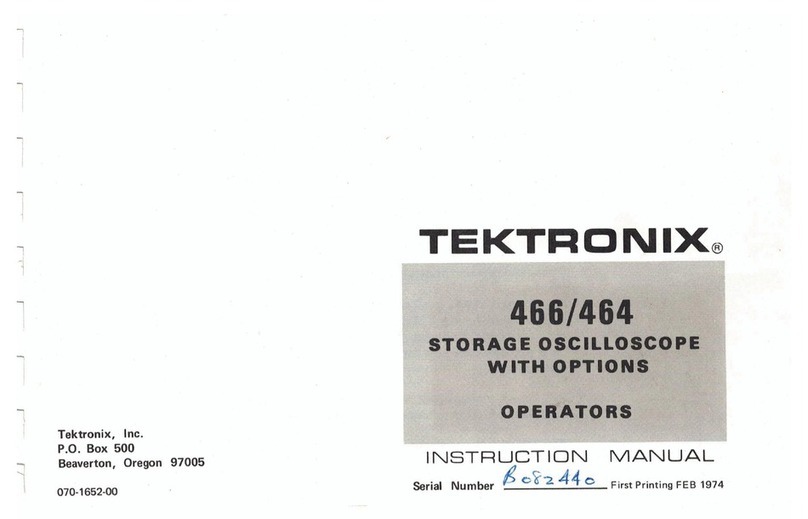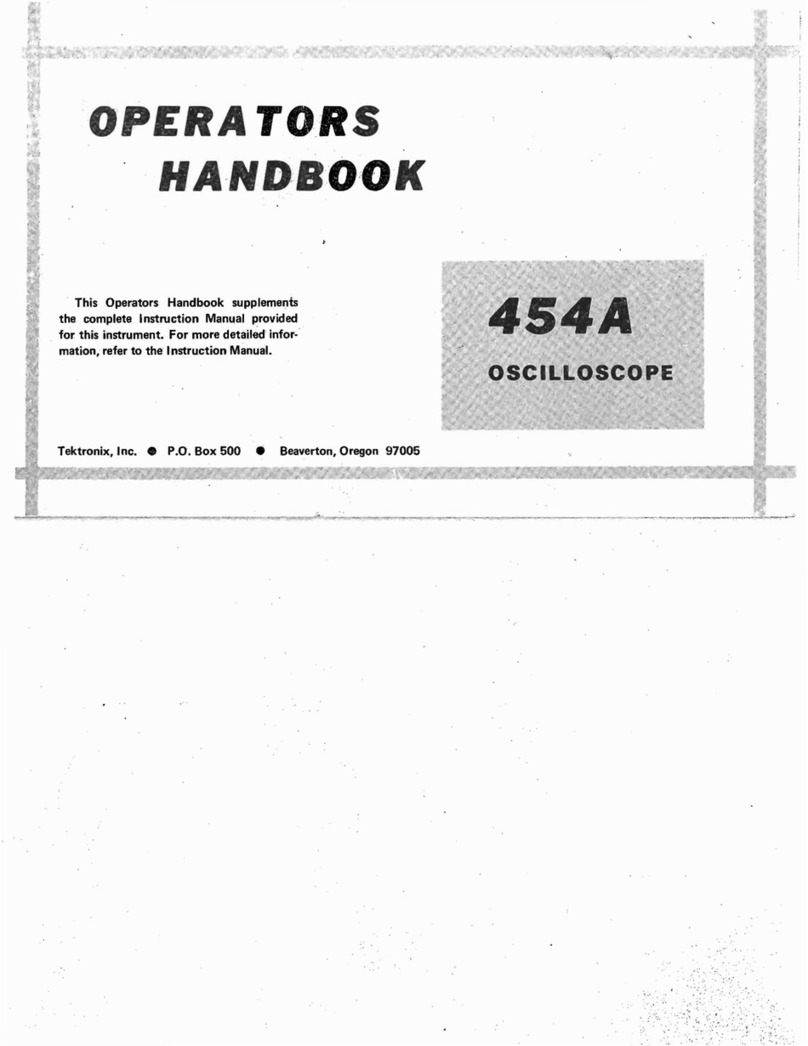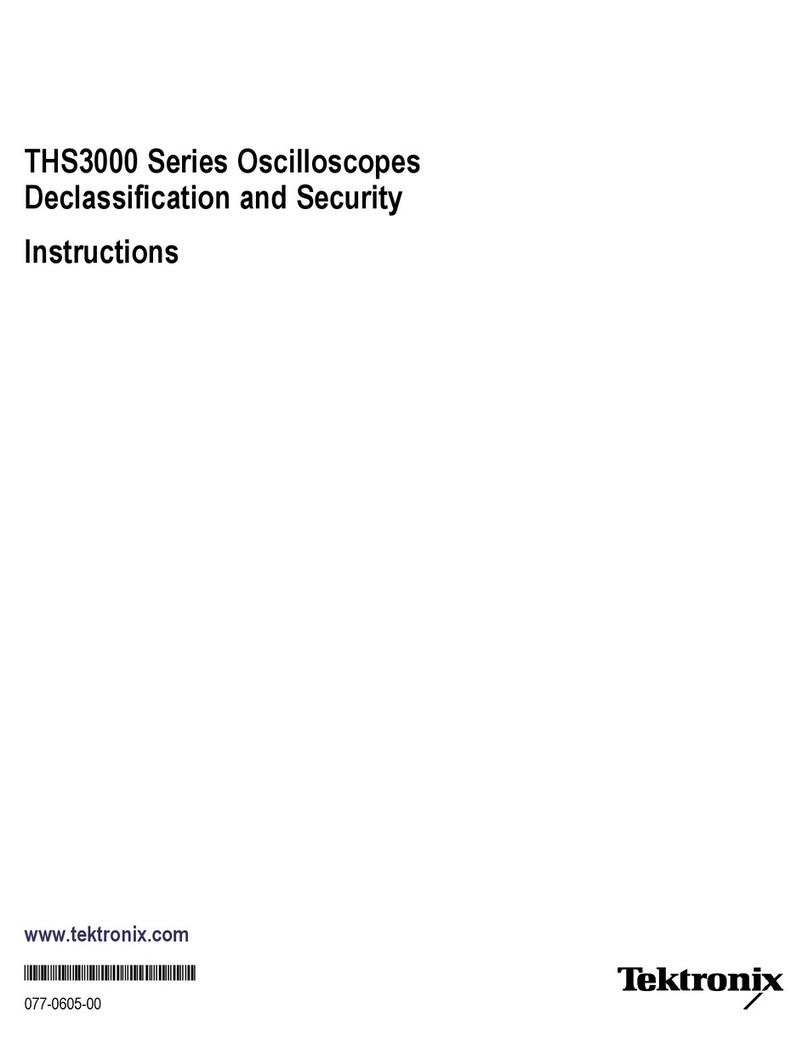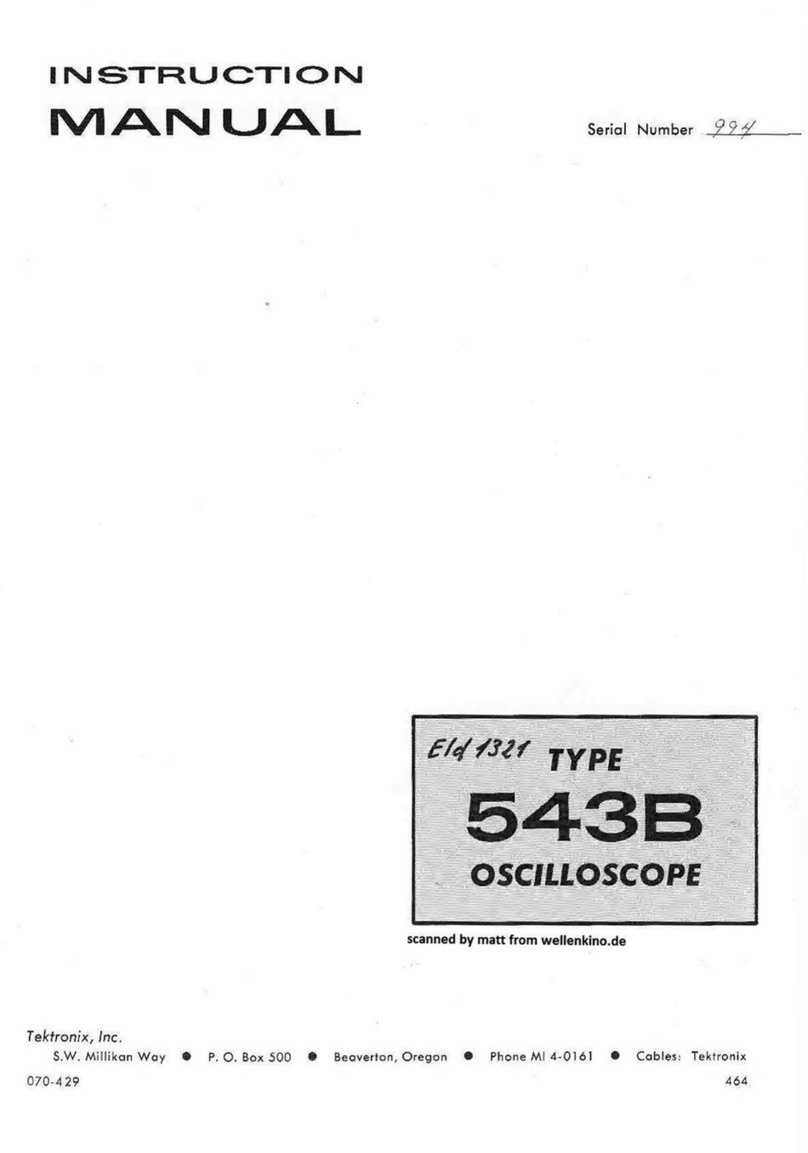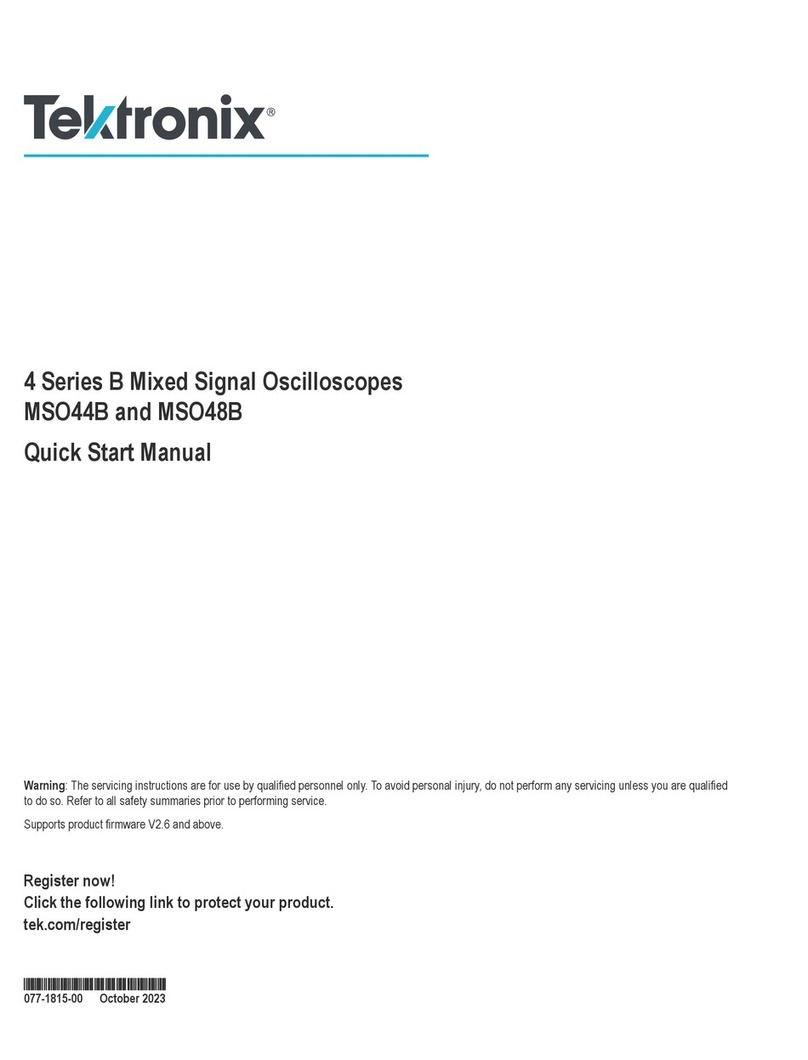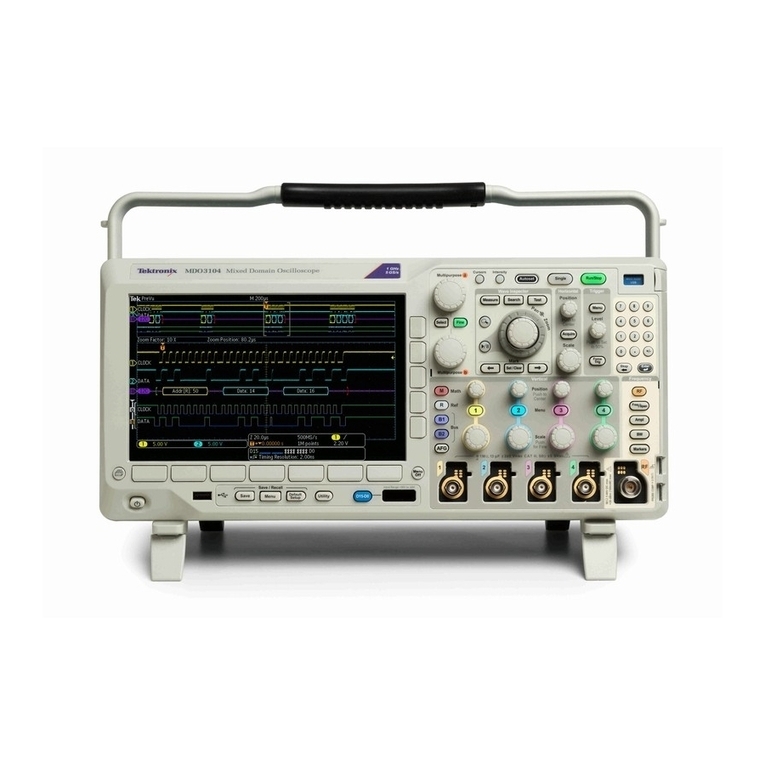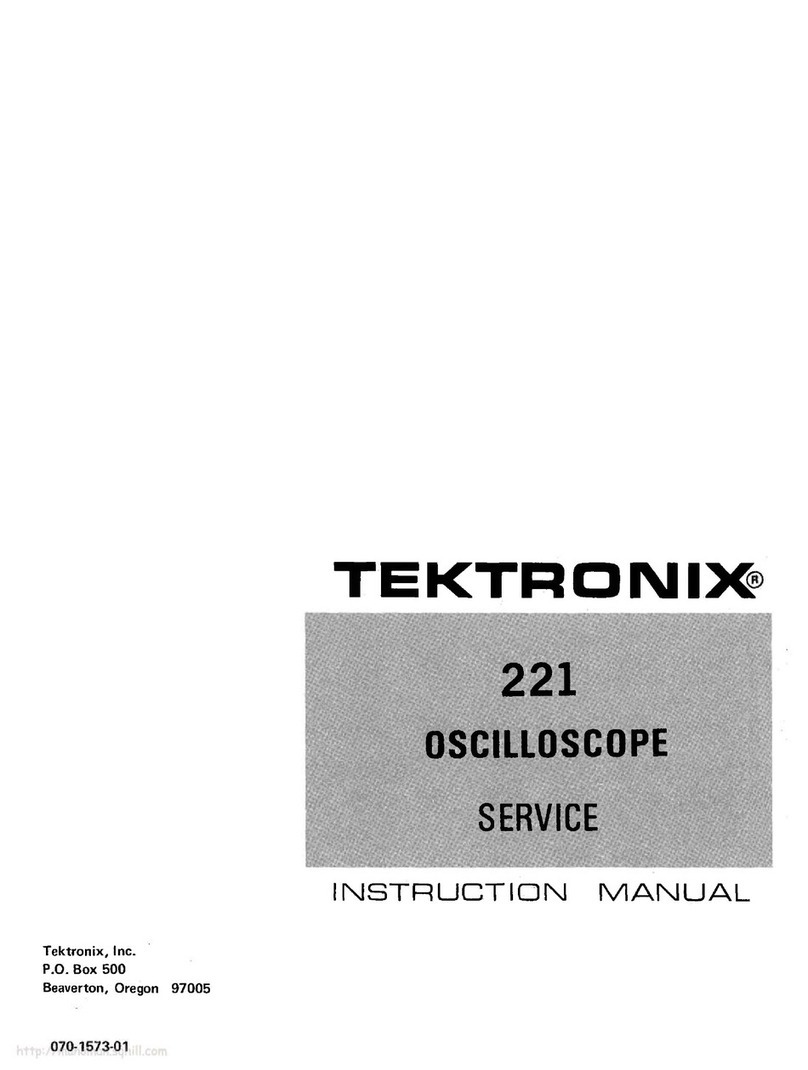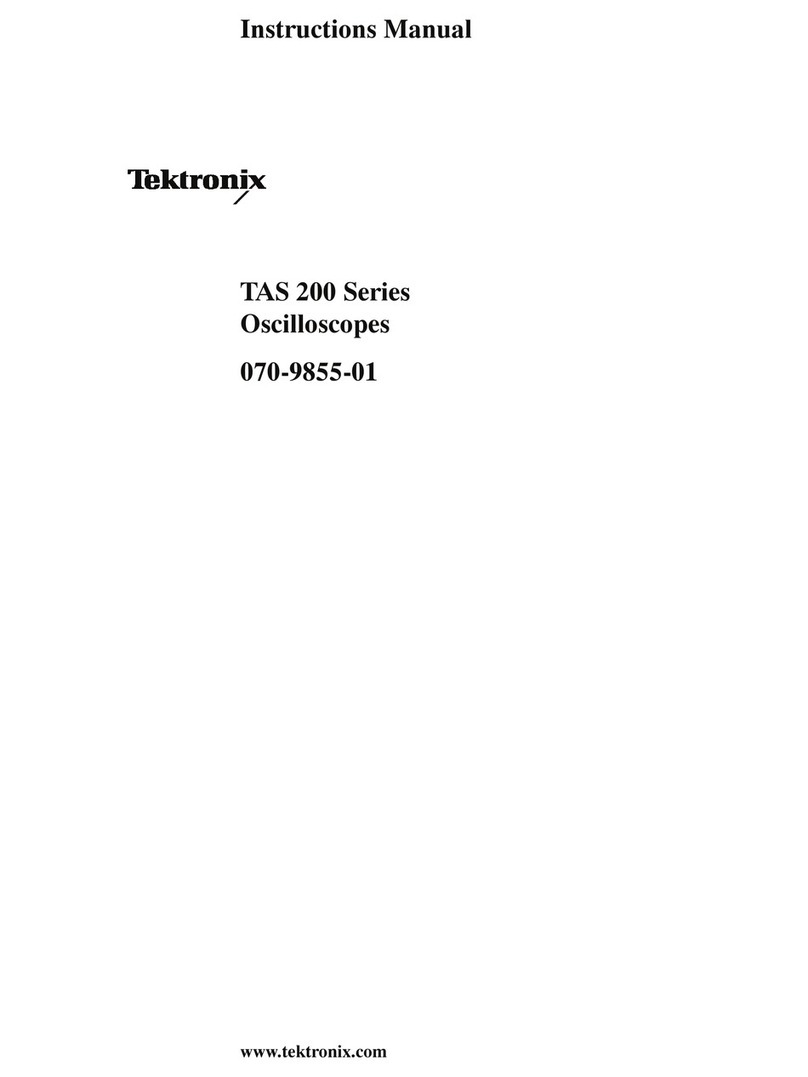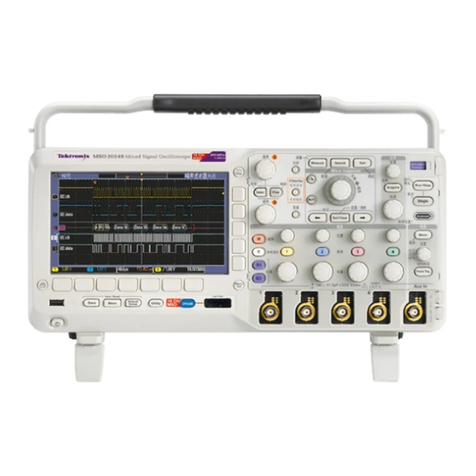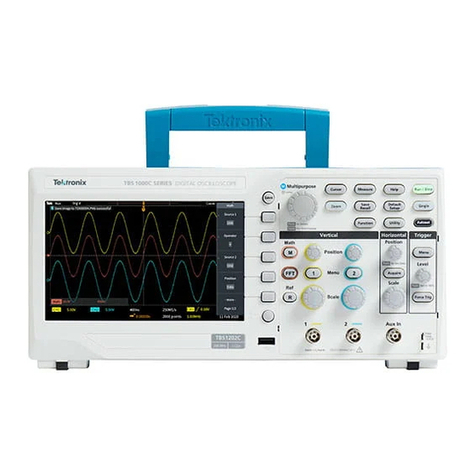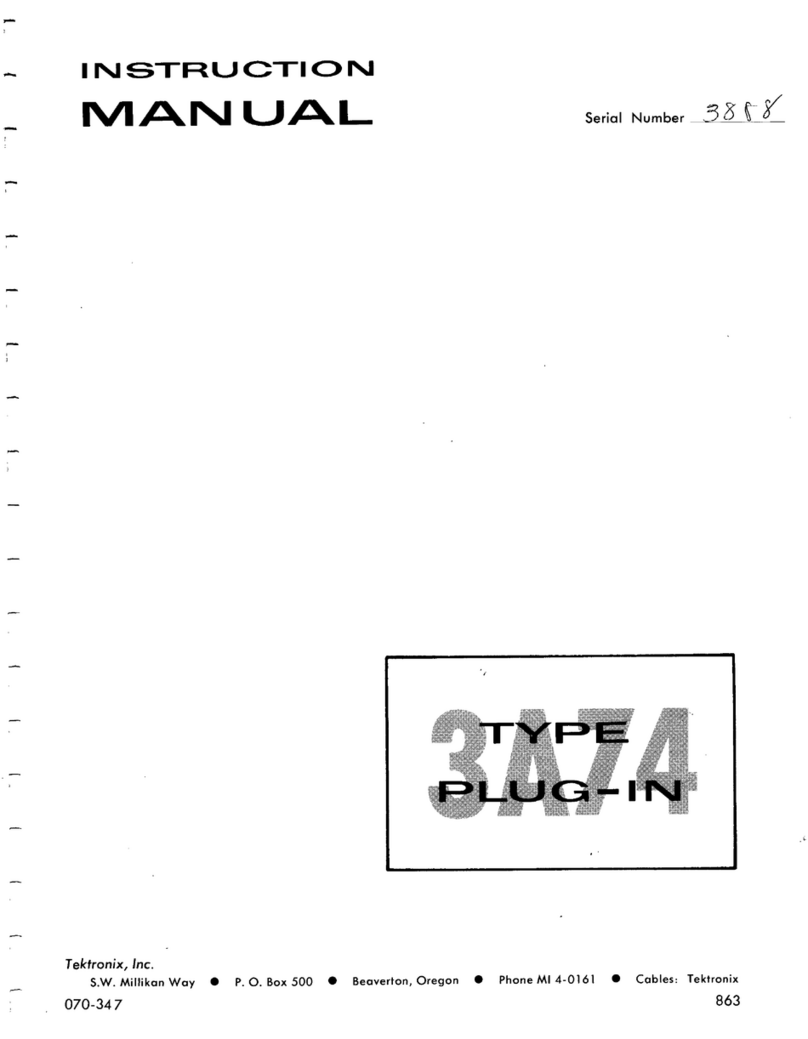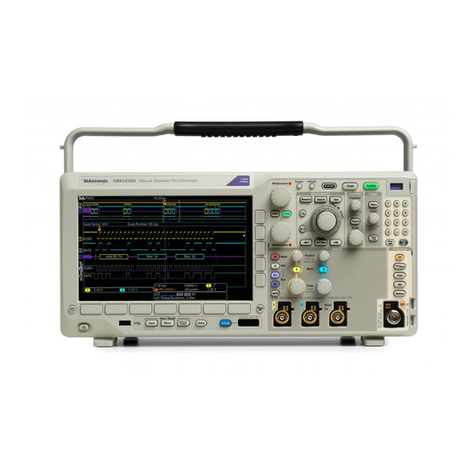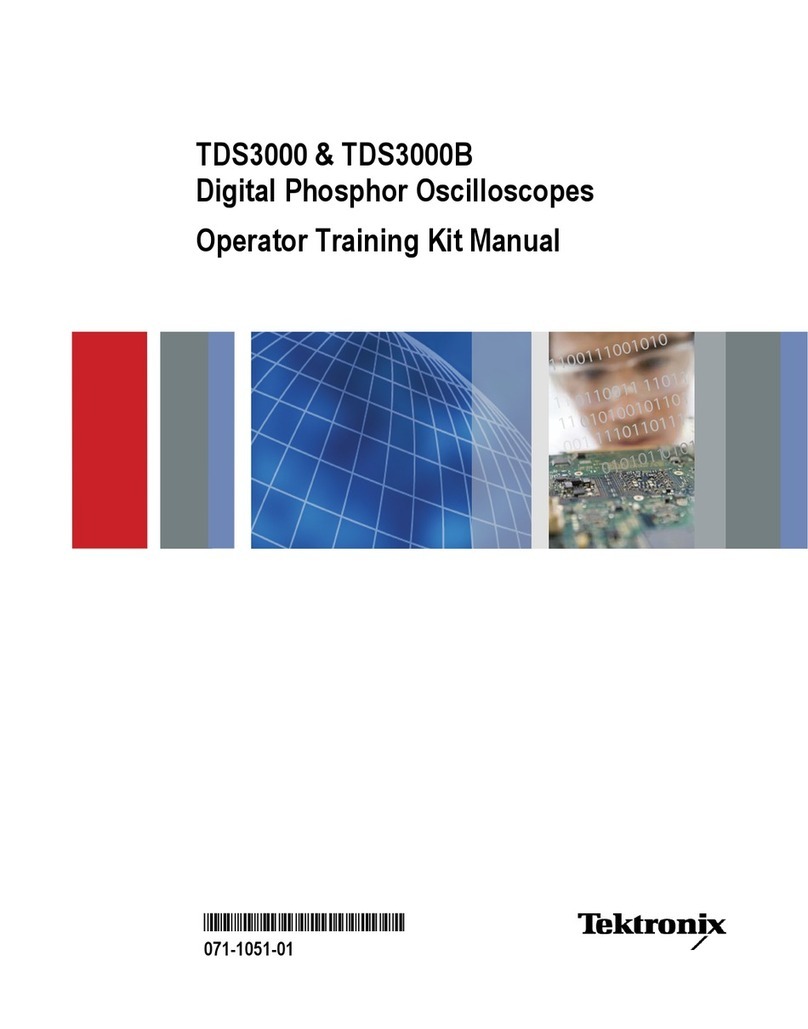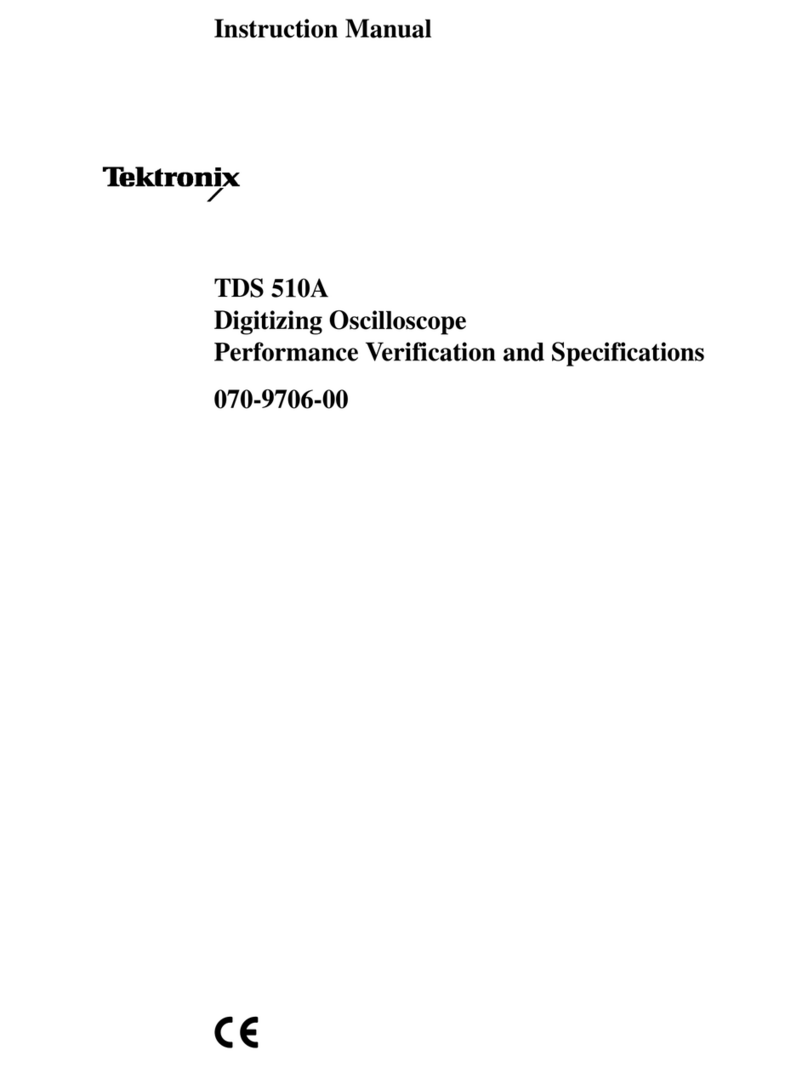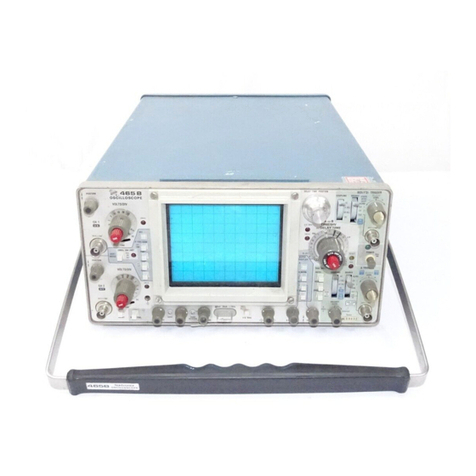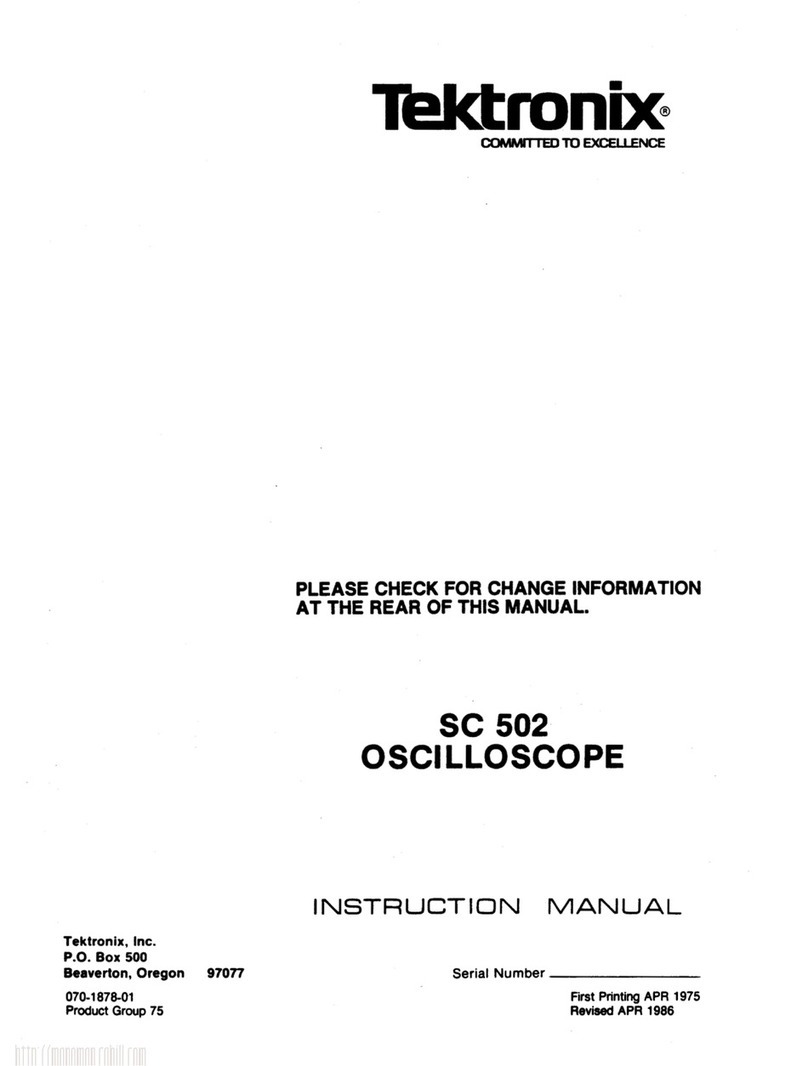
Typ« 321A
SECTION 7
CHARACTERISTICS
Introduction
Th« Tektronix Type 321 Ais ahigh-performance, dc-to-6
me, tronsistorized oscilloscope. Its light weight, small size
and ability to operate from avoriety of power sources make
it aversotile field and laboratory instrument. The oscillo-
scope can operate from its Inletnally-contoined rechorgeable
battery pock, an external dc source or from o115/i^-volt
50-800 cycle ac line. Reguloted power supplies in the instru-
ment, accurote colibrotion, ond precise linearity ossure exact
lime and omplilude measurements despite normal voltoge-
source and power-supply-load chonges that occur under
octuol operoling conditions.
Operotir>g temperature range derived from tests indicates
optimum performance ond reliability on its self-contained
batteries from 0* to -t-40* Cat altitudes up to 15,000 feet.
Temperoture range without botteries when operating from on
externol source is -—15' Cto -4-55* C. Non-operating tem-
perature range is —55* Cto +75* Cwithout botteries
ond —40* Cto -|-50* Cwith batteries at altitudes to
50,000 feet.
for the operotor's convenience, afront-panel bottery light
indicotes when the internal batteries are low. If exterrtal dc
or ac operation is being used insteod of the botteries, the
light turns on if the external voltoge source drops too low
for proper power supply regulation.
A4-position power switch on the front panel permits
convenient selection of charging rote ond/or power source.
Vertical Deflection System
Bandpass—Dc to at least 6me (3-db down) using dc cou-
pling; using oc coupling, low-frequency 3-db down point
is 2cps lypicol from oI-kc reference.
Sensitivity—0.01 v/div to 20v/div in II calibrated steps;
accuracy is within 3% of fronl-ponel markings. Con-
tinuously variable from 0.01 v/div to oboui 50 v/div
uncolibroled.
Input Impedance—35 pf nominal paralleled by 1megohm
8.2 pf nominal paralleled by 10 megohms
i'±:2%] when using the P5006 10X Probe.
Maximum Allowable Input Voltage Rating—500 volts com-
bined dc ond peak oc; 500 volts (not 1200 volts) peok-lo-
peak oc.
Triggering
Type—Automatic, or ompliiude-level selection using pre-
set stability.
Mode—Ac-coupled or Dc-coupled.
Slope—Plus, from rising slope of triggering woveform, or
minus from negotlve slope of triggering woveform.
Source—Internal from verticol signol, or external from
triggering signal.
Signal Requirements—Internal; 0.2 major division verticol
deflection ol Ikc increasing to 1major division at 6me.
External; 1volt peak-to-peok ot 1kc increasing to 3volts
peok-to-peok at 5me. Nominal input impedance; 5pf
porolleled by 100 kilohms (:±30%).
Sweep
Type—Miller Integrotor.
Sweep Rotes—O.Sftsec/div to 0.5$ec/div in 19 calibrated
steps Accurate SX sweep mognifier extends calibrated
rartge to 0.1 fisec/div. Calibrated sweep-rote accuracy
IS -tr3%. Sweep lime adjustable between steps and to
>1.5sec/div uncollbraled.
Extemol Horizontal Input
Bandpass—Oc to ot least 1me (3-db down).
Defleciion Foctor—1v/dv ±10% with 5X mognifier on.
Input Impedonce—30 pf lypicol porolleled by 100 kilohms
(±5%).
Amplitude Calibrator
Square Wove—Frequency about 2kc.
Amplitude—500 mv peok-topeok. Also 40 mv peok-to-
peak Iniernolly coupled in CAL 4DIV position of VOLTS/
DIV switch. Peok-lo-peak amplitude accuracy is ±3%.
Cathodo'Roy Tube
Type—Spedol Tektronix-monufactured T32I1. 3" flat-face,
post-deflection accelerator. Low heoter power.
Accelerating Potential—4kv.
Z-Axis Modulation—External terminal permits RC coupling
to ert grid.
Unblanking—Deflection unblonking.
Phosphor—Type P31 normally furnished; PI, P2, P7, and
PI1 phou>hors optional. CXher phosphors furnished on
special order.
Graticule
llluminotlon—Vorioble edge lighting when operating from
oc line.
Display Areo—Marked in 6-verticol ond 10-horizontal V/'
divisions.
Power Requirements
Source—Operotes from 10 size Dfloshlight cells, or 10
size Drechargeable cells (opproximotely 3hours using
2.5 ompere-hour cells; approximately 5hours using 4
1>1
